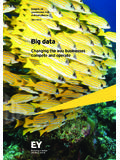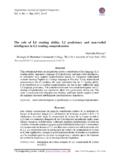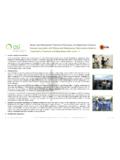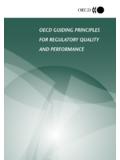Transcription of Knowledge and Skills Statement (KSS) matched to …
1 Knowledge and Skills Statement (KSS) matched to the PCF. KSS 1) Relationships and effective direct work KSS 3) Child development Build effective relationships with children, young people and families, which form the bedrock of all Observe and talk to children in their environment including at home, at school, with parents, carers, support and child protection responses. Be both authoritative and empathic and work in friends and peers to help understand the physical and emotional world in which the child lives, partnership with children, families and professionals, enabling full participation in assessment, including the quality of child and parent/carer interaction and other key relationships. Establish the planning, review and decision making.
2 Ensure child protection is always privileged. pattern of development for the child, promote optimal child development and be alert to signs that Provide support based on best evidence, which is tailored to meet individual child and family may indicate that the child is not meeting key developmental milestones, has been harmed or is at needs, and which addresses relevant and significant risks. Secure access to services, negotiating risk of harm. and challenging other professionals and organisations to provide the help required. Ensure Take account of typical age-related physical, cognitive, social, emotional and behavioural children and families, including children in public care, receive the support to which they are development over time, accepting that normative developmental tasks are different for each child entitled.
3 Depending on the interaction for that child between health, environmental and genetic factors. Support children and families in transition, including children and young people moving to and Assess the influence of cultural and social factors on child development, the effect of different between placements, those returning home, those being adopted or moving through to parenting styles, and the effect of loss, change and uncertainty in the development of resilience. independence. Help children to separate from, and sustain, multiple relationships recognising the Explore the extent to which behavioural and emotional development may also be a result of impact of loss and change communication difficulties, ill health or disability, adjusting practice to take account of these differences.
4 Seek further advice from relevant professionals to fully understand a child's development and behaviour. PCF Domains : Knowledge Knowledge Critical Reflection & Analysis Professionalism Values & Ethics Values & Ethics Diversity Intervention & Skills Rights, Justice & Economic Wellbeing Rights, Justice & Economic Wellbeing KSS 4) Adult mental ill health, substance misuse, domestic abuse, physical ill KSS 2) Communication health and disability Communicate clearly and sensitively with children of different ages and abilities, their families and Identify the impact of adult mental ill health, substance misuse, domestic abuse, physical in a range of settings and circumstances. Use methods based on best evidence.
5 Create immediate ill health and disability on family functioning and social circumstances and in particular rapport with people not previously known which facilitates engagement and motivation to the effect on children, including those who are young carers. Access the help and participate in child protection enquiries, assessments and services. assistance of other professionals in the identification and prevention of adult social need Act respectfully even when people are angry, hostile and resistant to change. Manage tensions and risk, including mental health and learning disability assessment. between parents, carers and family members, in ways that show persistence, determination and Coordinate emergency and routine services and synthesise multi-disciplinary judgements professional confidence.
6 As part of ongoing social work assessment. Use a range of strategies to help families Listen to the views, wishes and feelings of children and families and help parents and carers facing these difficulties. understand the ways in which their children communicate through their behaviour. Help them to Identify concerning adult behaviours that may indicate risk or increasing risk to children. understand how they might communicate more effectively with their children. Assess the likely impact on, and inter-relationship between, parenting and child Promote speech, language and communication support, identifying those children and adults who development. Recognise and act upon escalating social needs and risks, helping to are experiencing difficulties expressing themselves.
7 Produce written case notes and reports, which ensure that vulnerable adults are safeguarded and that a child is protected and their best are well argued, focused, and jargon free. Present a clear analysis and a sound rationale for interests always prioritised. actions as well as any conclusions reached, so that all parties are well informed. PCF Domains : PCF Domains : Knowledge Intervention & Skills Context and Organisations Professionalism Rights, Justice & Economic Wellbeing Professional Leadership Diversity Critical Reflection & Analysis Values & Ethics KSS 5) Abuse and neglect of children KSS 7) Analysis, decision-making, planning and review Exchange information with partner agencies about children and adults where there is concern Establish the seriousness that different risks present and any harm already suffered by a about the safety and welfare of children.
8 Triangulate evidence to ensure robust conclusions are child, balanced with family strengths and potential solutions. Set out the best options for drawn. Recognise harm and the risk indicators of different forms of harm to children relating to resolving difficulties facing the family and each child, considering the risk of future harm sexual, physical, emotional abuse and neglect. Take into account the long-term effects of and its consequences and the likelihood of successful change. cumulative harm, particularly in relation to early indicators of neglect. Prioritise children's need for emotional warmth, stability and sense of belonging, Consider the possibility of child sexual exploitation, grooming (on and offline), female genital particularly those in public care, as well as identity development, health and education, mutilation and enforced marriage and the range of adult behaviours which pose a risk to children, ensuring active participation and positive engagement of the child and family.
9 Test recognising too the potential for children to be perpetrators of abuse. multiple hypotheses about what is happening in families and to children, using evidence Lead the investigation of allegations of significant harm to children in consultation with other and professional judgement to reach timely conclusions. Challenge any prevailing professionals and practice supervisors. Draw one's own conclusions about the likelihood of, for professional conclusions in the light of new evidence or practice reflection. example, sexual abuse or non-accidental injury having occurred and the extent to which any injury Make realistic, child centred, plans within a review timeline, which will manage and is consistent with the explanation offered.
10 Commission a second professional opinion and take reduce identified risks and meet the needs of the child. Ensure sufficient multi- legal advice where necessary. disciplinary input into the process at all stages. Apply twin and triple track planning to minimise chances of drift or delay, being alert to the effectiveness or otherwise of current PCF Domains : support plans. Knowledge Rights, Justice & Economic Wellbeing Critical Reflection & Analysis Intervention & Skills Values & Ethics PCF Domains : Professionalism Critical Reflection & Analysis Knowledge Intervention & Skills KSS 6) Child and family assessment Context and Organisations Carry out in-depth and ongoing family assessment of social need and risk to children, with Rights, Justice & Economic Wellbeing particular emphasis on parental capacity and capability to change.







